With their tufted heads and uncanny beaks, all the different types of bird of paradise flowers (Strelitzia spp.) are showstoppers in their own right.
Even when they’re not flowering, the silky evergreen foliage is attractive and adds texture and interest year-round.
Since these plants originated in South Africa, they thrive in warm, humid regions and are popular in tropical and subtropical locations around the globe.
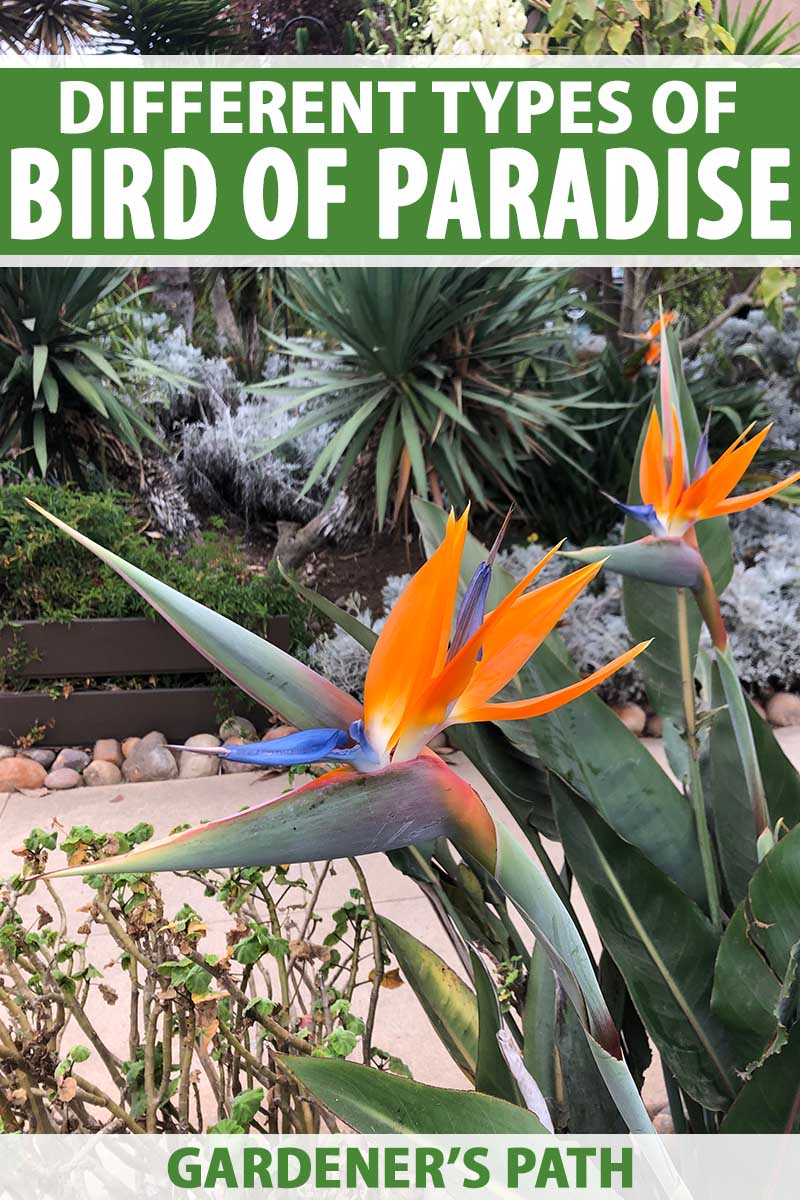
We link to vendors to help you find relevant products. If you buy from one of our links, we may earn a commission.
All species thrive in USDA Hardiness Zones 10 to 12, and sometimes in parts of Zone 9 if you keep them warm in the winter months.
You can grow them in colder zones as indoor plants, or as outdoor plants in the summer, and indoors in the winter.
But there are some meaningful differences between bird of paradise plants that you should be aware of before choosing one (or three) to plant indoors or out.
In this guide, I’ll cover everything you need to know so that you don’t accidentally plant a 30-foot plant inside your 1,500 square foot home.
Here’s what you’ll discover:
Bird of Paradise Types
The Five Strelitzia Species
This striking plant is part of the Strelitziaceae family and there are five main species in the Strelitzia genus. Some make perfect potted plants, like the relatively short S. juncea and S. reginae.
Others, like S. nicolai, are a massive, impactful piece of landscaping at well-known theme parks like Disneyland.
The five species are:
1. S. alba
S. alba is one of three tree-like Strelizia species, along with S. nicolai and S. caudata.
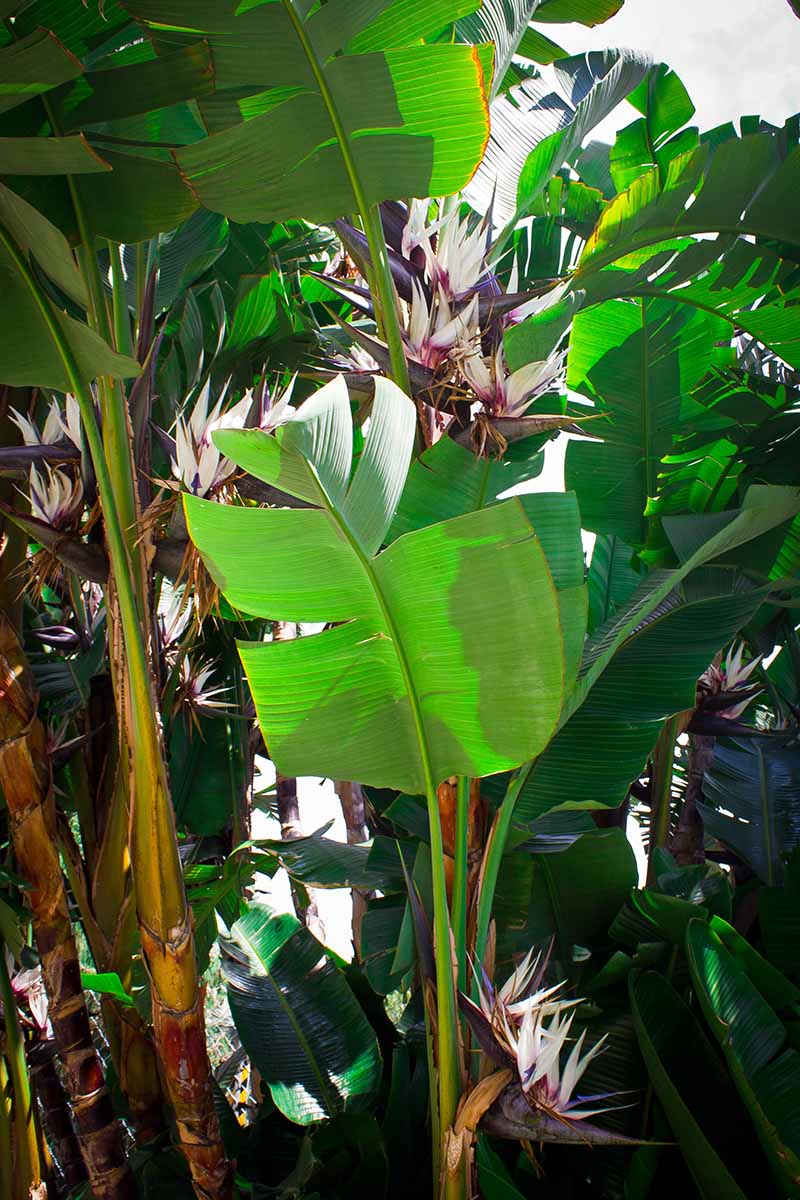
These evergreen, herbaceous flowering perennials can grow to shocking heights in optimal conditions. Think 30 feet or taller!
Often called the white-flowered banana plant thanks to its white flowers and banana-like leaves, S. alba blooms from July to December in the northern hemisphere.
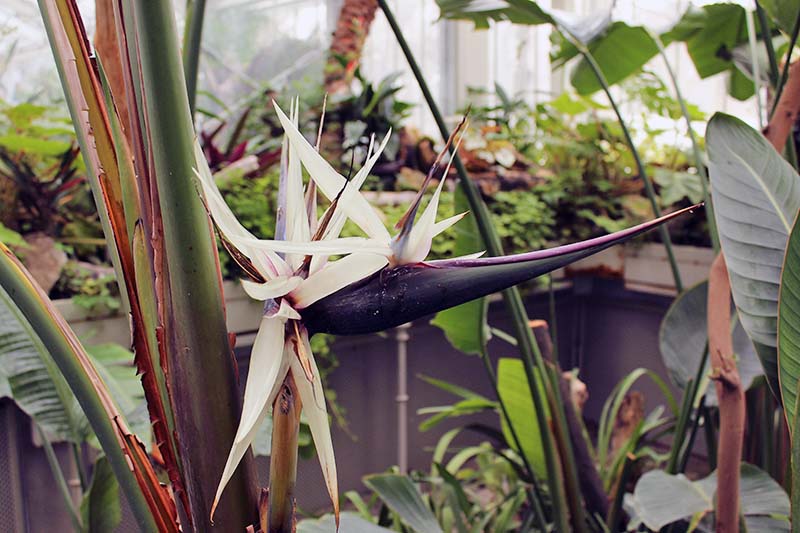
These imposing plants are found growing wild in coastal areas of the western Cape region of South Africa and in Madagascar.
2. S. caudata
Also known as the “mountain wild banana,” S. caudata grows wild in the mountains of southern Africa, from South Africa to Swaziland and up through Zimbabwe.
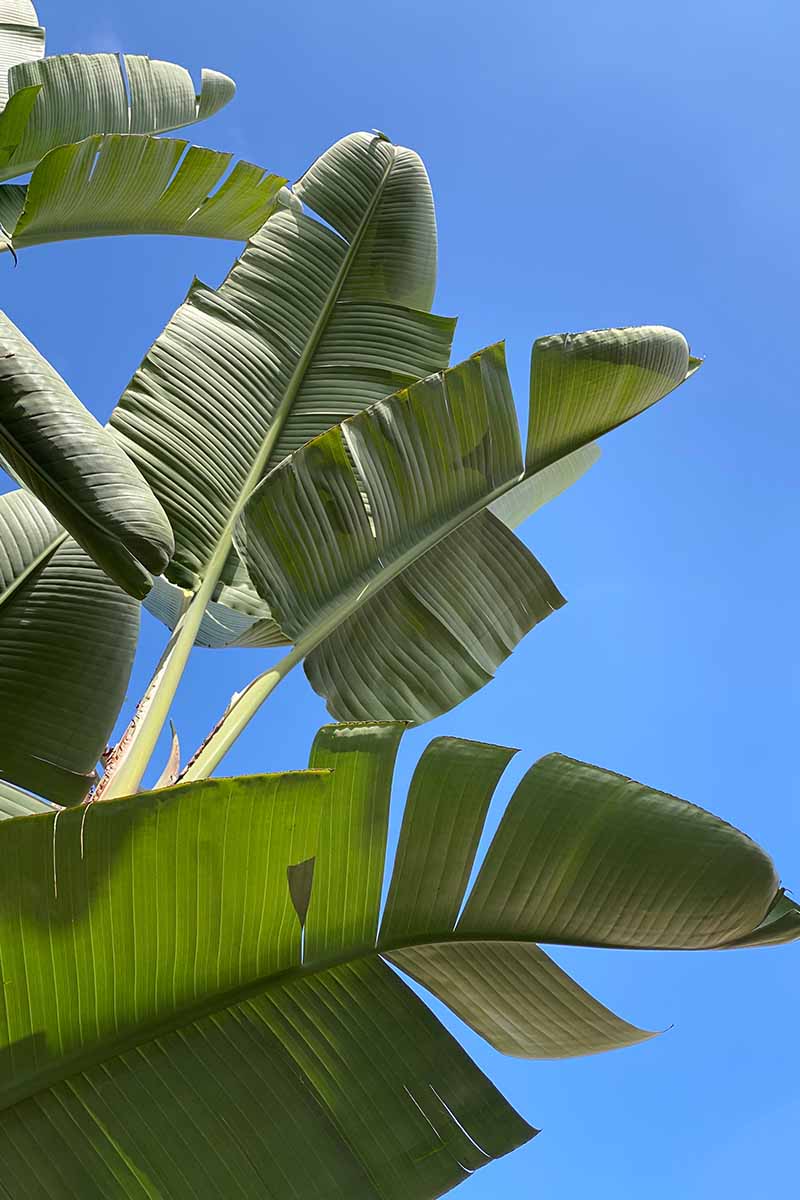
It has the flair of the traveler’s palm (Ravenala madagascariensis), a related species in the same family, and the foliage style of a banana plant.
S. caudata grows up to 20 feet tall and sports black-beaked, white-tufted flowers.
3. S. juncea
S. juncea, also known as narrow leaf bird of paradise, looks a lot like the most common species, S. reginae, but its leaves are reed-like instead of banana-shaped.
The orange and blue flowers are slightly smaller than those of S. reginae.
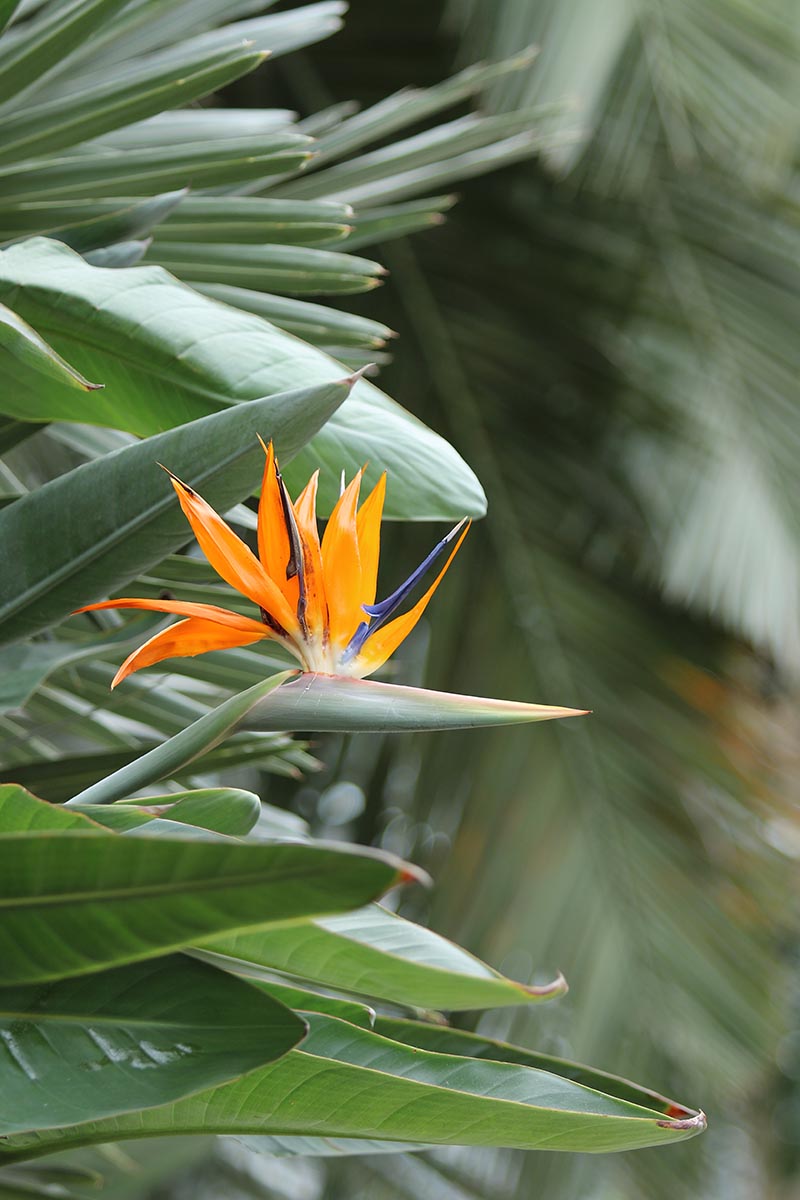
Reaching a mature height of three to six feet tall, this species makes a lovely cut flower or border in a tropical-style garden.
Originally thought to be a variety of S. reginae, it was reclassified as S. juncea in 1974 after genetic research conducted by Dr Hendrik Albertus van de Venter from the University of Pretoria in South Africa.

This species is also ideal for indoor growing. If you set them outside during the summer and bring them in when temperatures drop, you’ll enjoy blooms during the warm season and pretty green foliage to keep you company while it’s cold outside.
4. S. nicolai
Like S. alba, S. nicolai resembles a banana plant and can grow up to 20 feet tall. Which is still huge, but smaller than S. alba.
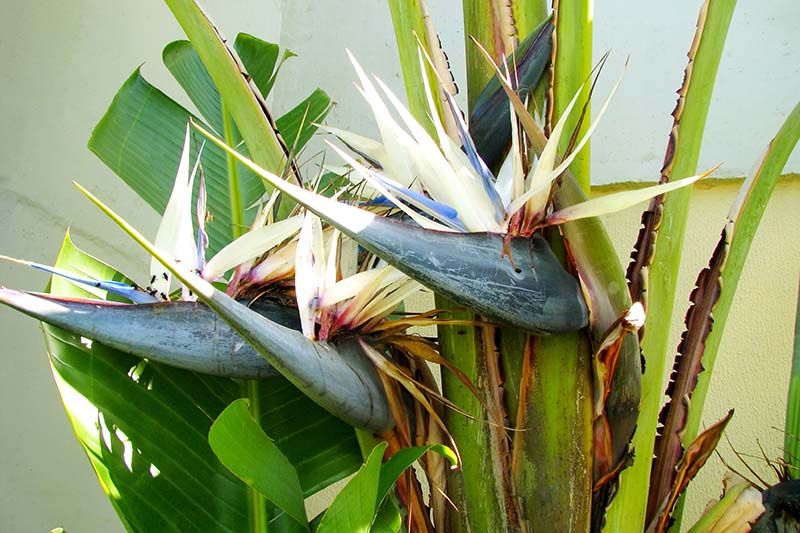
Often called the giant white bird of paradise, S. nicolai plants sport white flowers with dark blue-gray “beaks.”
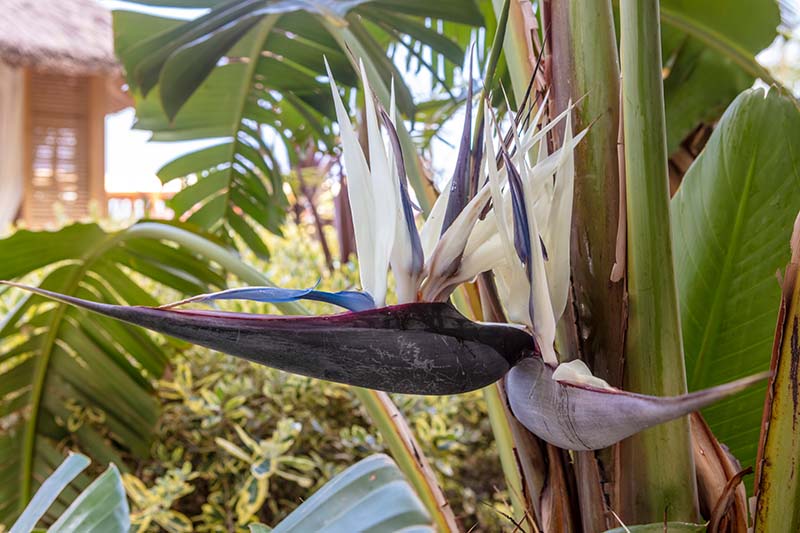
S. nicolai makes an excellent outdoor landscape piece for anyone who lives in Zones 10-12. Use it as a border to create a natural fence between you and the road or you and a neighbor!
5. S. reginae
Meet the most beautiful species of all, the orange-flowered S. reginae, which was a constant part of the landscape at the university I attended in southern California.
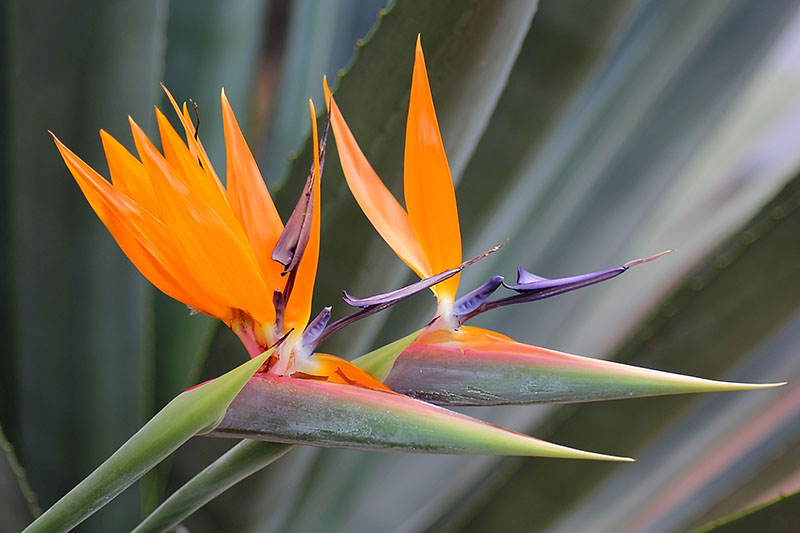
Since it grows to a much more manageable mature height of just five to six feet, it’s easier to spot the orange clusters of flowers on S. reginae than it is to see the blooms on taller plants in the genus.
This species blooms off and on all year long, but like its sister species, it can suffer if temperatures drop below freezing.
Prolific in warm, balmy Florida, it nevertheless requires cold protection in the northern part of the state.
The same is true for Strelitzias grown in cooler parts of California. This makes it an ideal houseplant during winter – or all year round if you live somewhere that’s colder than Zone 9.
Bring the Cheery Tropics Home
The most commonly grown bird of paradise species around the world, whether for outdoor landscaping or indoor cheer, are S. alba, S. juncea, S. nicolai, and S. reginae.
S. caudata mainly grows in the wild, so if you ever visit the stunning mountains of southern Africa, keep your eye out for this one!

Now that you can tell the five types apart, you can choose the best varieties to plant at home, and don’t forget to consult our guide to growing bird of paradise to learn more.
What type are you growing? Let us know in the comments below and feel free to share a picture!
And for more information about bird of paradise plants, check out these guides next:
- How and When to Prune Bird of Paradise Plants
- Deadheading Bird of Paradise: How to Remove Spent Blooms
- How to Prevent and Treat Common Bird of Paradise Diseases
© Ask the Experts, LLC. ALL RIGHTS RESERVED. See our TOS for more details. Uncredited photos: Shutterstock.
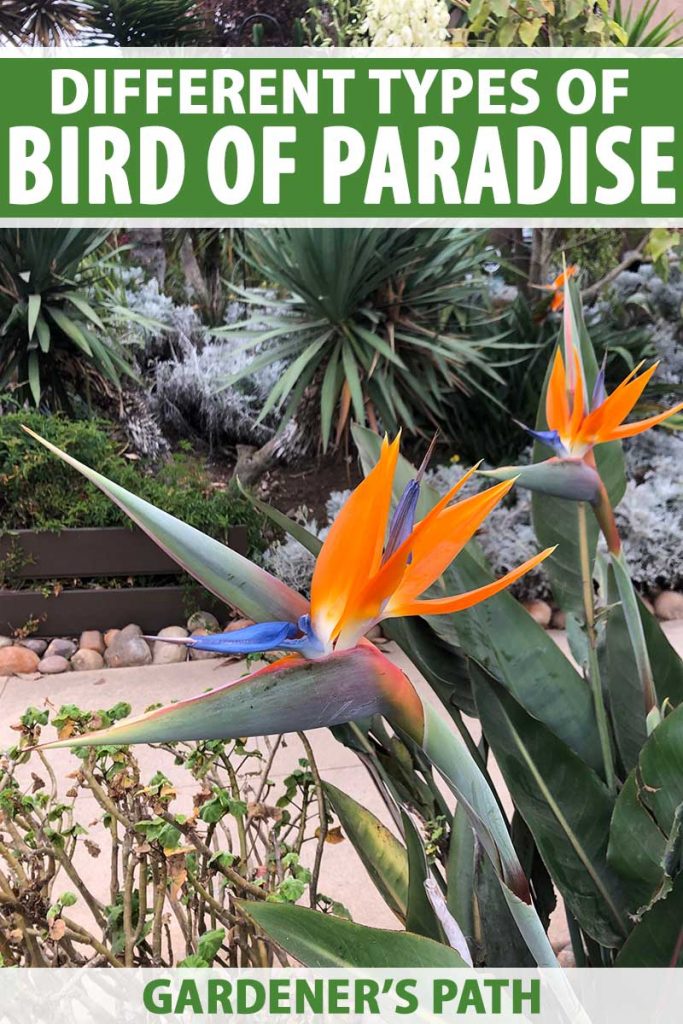
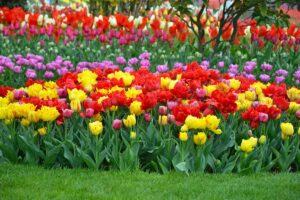
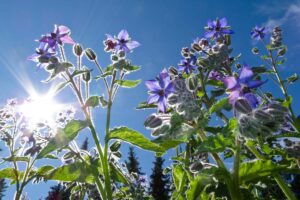
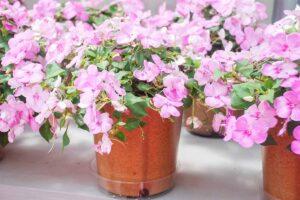
Need to know more about this plant … We thought it was a Bird of Paradise, but can’t find info about it as pictured in link and attached pic:
This looks a lot to me like a variety of Heliconia, perhaps the lobster claw variety (H. bihai). These tropical plants are commonly cultivated as ornamentals as well.
What kind of fertilizer is good for the bird of paradise? I’ve had 2 plants for 5+ years that have never bloomed. I’m in north Florida and do have to protect them in the winter. They are planted in the ground.
Hi Lynette! I love using organic Dr. Earth tropical plant fertilizer for birds of paradise, which is available on Amazon. Apply every two months according to the directions on the back of the package and you should get some blooms going!
Hi, do you know which type of birds of paradise this is? I’ve had it about 3.5 years. It was about 8 inches tall with two leaves when I got it. I get so excited when a new leaf unfolds, will try fertilizing more for blooms.
Hi Lauren! Thank you for the photo — beautiful plant. Looks like S. reginae to me!
Silly question but do you have any idea if this is a Bird of Paradise species? (And if so which? And if not what it might be) It was at a local garden centre but the owner had no idea what type of plant he was selling ???? and I didn’t want to buy something that might outgrow my space!
Cheers
This is definitely a bird of paradise! It may be S. reginae, but without blooms it’s hard to tell. The size indicates that it could be the larger S. nicolai, which definitely grows huge.
Thank you so much for your help!
Have these in my backyard which I assumed were Bird of paradise. Can you identify which species they are? They don’t seem to give the large orange flower… it’s more of a small red flower. Any help would be appreciate. Thanks in advance!
Hi Laura, any idea what species these are in the picture above? They’re in my backyard and I’ve read some Bird of Paradise plants are toxic to dogs. Wondering if you have an idea which species these are?
Hi Alexandra! This looks like canna, also called canna lily, and thankfully it is non-toxic for dogs and cats.
My bird of paradise flower I live in England on the south coast
Let us know if you have any questions about growing it! 🙂
Are you able to help me figure out this species? Thank you
Can you try again to share a photo, David? If you did already, it doesn’t seem to have uploaded.
Sorry for the delay, I had to reduce the size on my desktop. Here it is, the leaves look like stalks only its strange.
Hi David, this looks like Strelitzia juncea aka rush bird of paradise as it has cylindrical leaves but lacks the leaf blade. It’s beautiful!
How does one spot the difference between S. Nicolai, S. Caudata and S. Alba?